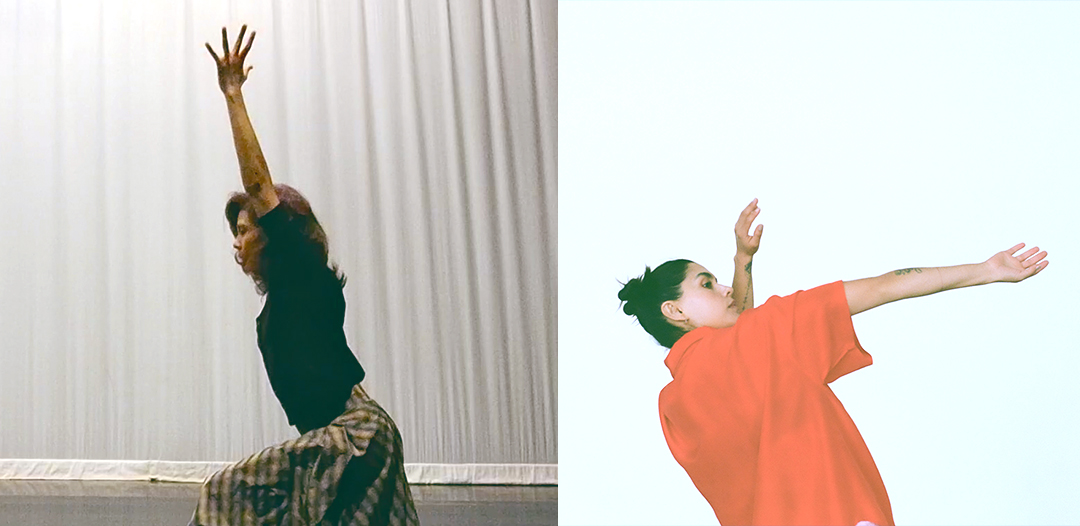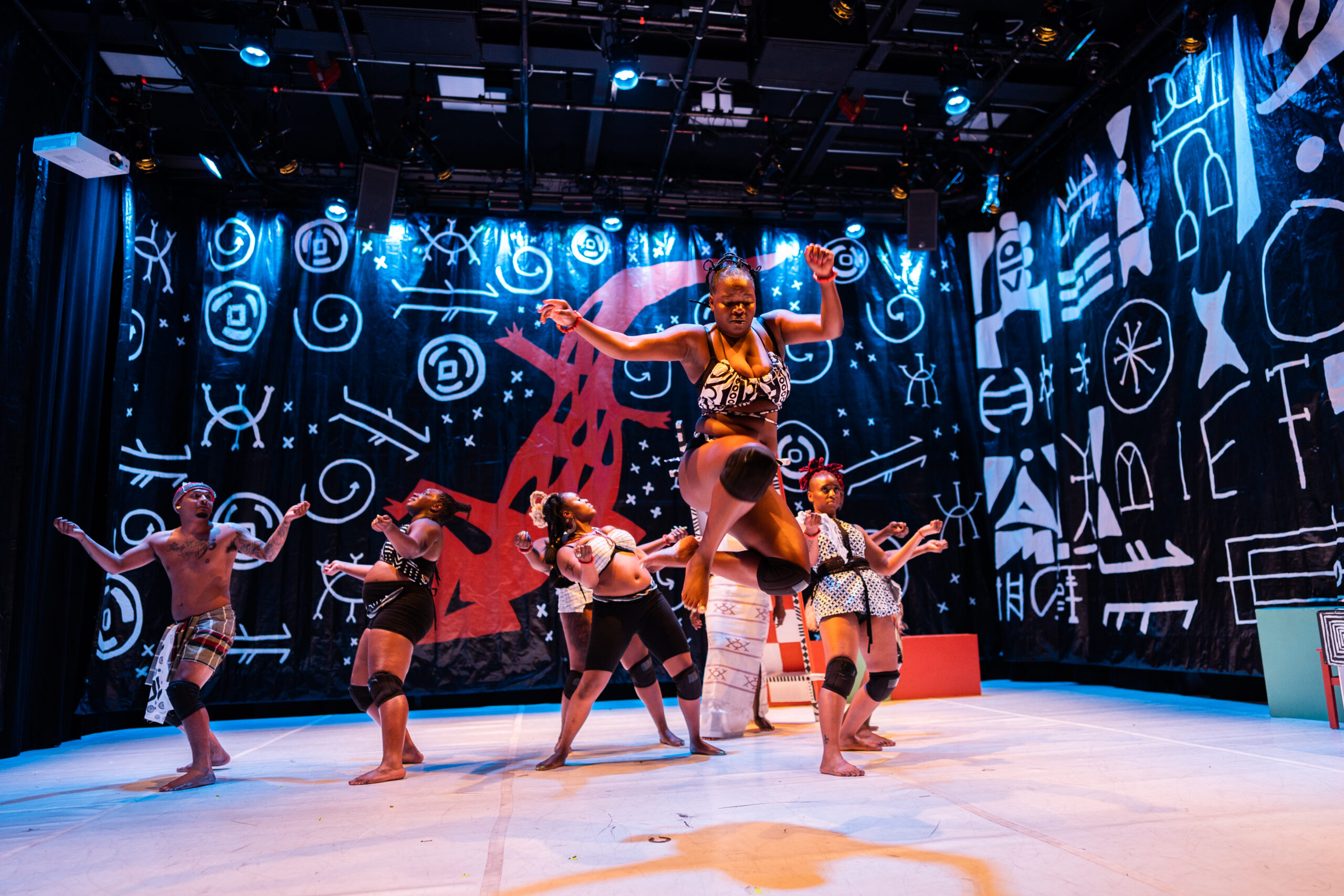Transcription by: Jazlynn G. Eugenio Pastor
(Five Feet Dance Collaborator)
Joyce: I don’t know if it’s really questions, but this whole process has really forced me to relook at both my pride and shame of being Chinese; really having to- It’s made me go back. I feel like I’ve kind of worked through some of this before but to relive it again and to do it, again like I’ve said it before, through the lense of different ages and different heritages has really made me rethink how I dealt with my own issues growing up. And also, recognition of the emotional, mental, and psychological effects of others’ biases and beliefs of who I am because- just because of the way I look and how it’s sort of made me think about my own identity and place in society as a whole.
Clarissa: I think this has always been something I’m conscious of but now, particularly, being in a group of folks from different Asian American- or Asian heritages, reflecting on my own biases within our own Asian community. What preconceptions do I have about other groups of people within this community that seemingly gets groups together often but there’s so many nuances and there’s so many different experiences of the same thing.
Do I act differently towards a certain person because of their identity? And through chatting and learning about other people’s experiences, that’s just made me think about the more on a daily basis rather than just in this space.
Joyce: Yeah, that’s true. It’s definitely made me think about experiences on the periphery of my own experiences. I started really thinking more about, we’ve been talking about the female experiences growing up Asian American, but it really made me think about my brother’s experience growing up Asian male now or what my Mom had to go through dealing with this defiant Asian, little girl who wasn’t acting like an Asian, little girl. And how that may have affected her and hurt her. So it’s really- I think it’s taking, while it’s forced me to look at myself, it’s forced me to look at the people around me as well too.
Kathleen: That’s true! Just in- because we have shared stories that are, you know, very personal and have opened up. I feel like coming out of this experience just on a daily basis and interacting with just people in the world, I feel that I have heightened sense of just seeing individuals more as individuals and like, “You’ve probably got some amazing story!” And “You’ve probably got some really deep stuff going on.” And I should treat you accordingly with the same sort of respect and honor that
I’ve just come out of this process where I’ve had this kind of respect and honor for my personal story; which is even beyond the work we are doing as Asian American women, but it’s also I feel that this platform, this process, has also implications of just how you look at people and knowing that they each have their own stuff that’s just as important as your stuff.
Melissa: Mhm, yeah. I think kind of related to this idea of multiple experiences, one thing that we’ve been kind of talking of as a cast is a thing I’ve been thinking of how do we come together and have these commonalities? And this common- what is the common ground? And beyond that,
how do we push up against the homogenization or the sameness or stereotypes of “Asian” and also, how do we take that into the dance process and the work that gets made?
That’s been really…interesting to grapple with those things on a personal identity, history level. But also bringing it into the present, how are we crafting this together? And finding that common ground that also has enough of the specifics?
Kathleen: That is a question, “How do we keep what we’re making…specific- how do you address specificity and not just generic?” That’s a hard question.
Clarissa: Yeah, and how people perceive it, and how will people percieve. Looking ahead and thinking about who will be in this audience. And how will they view what we’re presenting right now. It’s, you know, it not necessarily going to be people of this experience watching our work. They might come from so many various backgrounds and understanding of who we are as people. They might be my family members or my friends who know me, but they might be complete strangers who nothing about Asian American experiences. So in this process, trying our best to keep that in mind while making the work is difficult.
Malia: Yeah, I think also I’ve been reflecting on just how much I’ve had a certain pride in being Asian American. Being Japanese Filipino.
Growing up, I always carried a certain amount of pride but not too much. And only as much as it was acceptable to be unique. But like walking this fine line of being interesting and unique and different and being completely othered. And especially in dance spaces where I really – like as a survival tactic – learned to embrace my Whiteness.
It’s just really made me reflect on how we make work, how we view work in the dance community and in the art community. And do we have to do this in order to have these conversations? I don’t know…maybe we do. Will be have to forever? I don’t know. It’s been affirming to my values. I hope it makes other question theirs.
Joyce: I’m hoping for non-Asian Americans that it’ll make them realize we’re not just the quiet, submissive minority that can sort of pass through White society just because we work hard. We’re also a complex group with different struggles. I don’t know, I feel like that as a broad group, Asian Americans are sort of dismissed as being, “Yeah they’re a different minority but they don’t really bother us in society so much.” We’re not so defiant, we’re not so in your face. We kind of just slip through, you know? We’re always known as the good minority. And hey, maybe that’s cool, but maybe that’s not so cool.
Clarissa: I also want to speak that, in being the Model Minority¹, or the “good” minority, also hurts other minority groups and we get to pass, almost, while other folks are experiencing violence towards them. They’re experiencing attacks and harassment for being who they are. And…you know, some of us- well me personally, within the last 4 years, I’ve kind of reflected on my comfort of being ignored of kind or being “okayed” in the Model Minority Myth. And my activism in speaking in unity with others. Like, do I want to speak up? That’s my personal survival technique. But it’s necessary for me to do that – to be in support of others who are being attacked in this way, or aren’t experiencing this privilege of being ignored. Even though it’s weird to say it’s a privilege to be ignored or to pass.
Nina: I’ve often felt very guilty with this identity of like I get to call myself a POC², but really
Kathleen: –am I really, truly…
Nina: Yeah,
Kathleen: At the nitty gritty, right. Because I am experiencing minor, daily indignities-
Joyce: That’s what it is. It’s showing that our- the racism that we feel not everyday, White America may realize because it’s so quiet and insidious for us. What we’re experiencing is something that’s on a daily, quiet basis that chips at us every day. In that, others may not know this. Other people that I’ve talked about this experience – that are not Asian American – told me, “Oh you guys are just overthinking it.”
Because it may feel so slight, but a slight injustice constantly hammering every day of your life cuts really deep as well too.
Malia: I think we’re speaking a lot to the complexity that is really important to name, and to acknowledge this idea that being silent is something I think about a lot. And I think that I’ve been silenced a lot my entire life, and a large part of it is due to my culture. Due to watching my Japanese Grandmother not speak up when my Grandfather was frustrating her or even hurting her emotionally, you know? And… That’s partly why this work is important. We’re not being silent. Talking about minority races as a whole is so…it’s fraught because we can compare all of the injustices we’ve had against us, but it comes down to the fact that we’re living in a country that was founded on White Supremacy³. That’s just…what we’re doing.
Clarissa: Also in thinking about doing this work and understanding that we don’t have to be that – we don’t have to be what’s expected of us. I think in turn, can help- can influence how we are in the greater community and how we are with other minority groups and how we are, just in treating others with dignity and respect. By giving ourselves the chance to do that first, for
our story and
our voices and for
our own personality and
individuality.
Melissa: I think creating space to kind of work through and think through the hugeness of how we relate to this society right now; White Supremacy and all of the parts of that. I think it’s important to bring those conversations to the surface and reflect on how it’s in relation to what’s out there in the world and other experiences. Yeah, like the idea that
my liberation is tied to
yours and
yours and
everybody’s.
That creating some sort of movement or disruption within this process. My hope is that it ripples in relation to whatever else is out these.
Clarissa: Definitely, yeah. I guess it didn’t turn out to be questions after all.
Everyone giggles
Clarissa: Just more things to think about. Great, thanks everybody!
Everyone: Thank you!
-
A stereotype that Asians/Asian Americans are more successful compared to fellow minorities.
-
Acronym for person/people of color
-
“…a political, economic and cultural system in which whites overwhelmingly control power and material resources, conscious and unconscious ideas of white superiority and entitlement…” -David Gillborn
Feature photo credit: Left to right: Nina Wu, Melissa Lewis, Kathleen Moore, Malie Byrne, Joyce Kushner, Jazlynn Pastor; Photo by Afshin Odabaee
(de)classified by Five Feet Dance premieres Apr 5-14 as part of CounterPulse’s Edge Residency 2018
Share This!
More Good Stuff
I Savia~Sap flow: Embodied Connection with Ancestry and Nature by Diana Lara & auiga by gizeh muñiz vengel in collaboration with Grisel Torres and
Edge is an incubation residency and commissioning program for contemporary choreographers whose work is deeply curious about the intersection of art practice and social change.
Inspired by ancestral, community-centered, and spiritual relationships to land and plants, [and then we must be] by Audrey Johnson is a research and ritual project honoring Black American practices with land and plants through the modes of food, farming, rootwork, and magic. The work honors the practices that get passed down through recipe, spell, and story, as well as the memories active and activated in the body, plants, the land (soil, clay, mycelium, strata), and in spirit.




